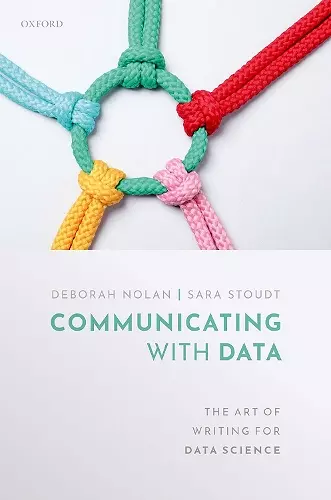Communicating with Data
The Art of Writing for Data Science
Deborah Nolan author Sara Stoudt author
Format:Hardback
Publisher:Oxford University Press
Published:25th Mar '21
Currently unavailable, and unfortunately no date known when it will be back
This hardback is available in another edition too:
- Paperback£45.99(9780198862758)

Communication is a critical yet often overlooked part of data science. Communicating with Data aims to help students and researchers write about their insights in a way that is both compelling and faithful to the data. General advice on science writing is also provided, including how to distill findings into a story and organize and revise the story, and how to write clearly, concisely, and precisely. This is an excellent resource for students who want to learn how to write about scientific findings, and for instructors who are teaching a science course in communication or a course with a writing component. Communicating with Data consists of five parts. Part I helps the novice learn to write by reading the work of others. Part II delves into the specifics of how to describe data at a level appropriate for publication, create informative and effective visualizations, and communicate an analysis pipeline through well-written, reproducible code. Part III demonstrates how to reduce a data analysis to a compelling story and organize and write the first draft of a technical paper. Part IV addresses revision; this includes advice on writing about statistical findings in a clear and accurate way, general writing advice, and strategies for proof reading and revising. Part V offers advice about communication strategies beyond the page, which include giving talks, building a professional network, and participating in online communities. This book also provides 22 portfolio prompts that extend the guidance and examples in the earlier parts of the book and help writers build their portfolio of data communication.
This book about technical writing is particularly suitable (and necessary) for students in data science, or in any mathematical science. It begins with chapters on how to read technical articles, science news stories, and press releases ("examine the argument"); continues with chapters on how to describe and present data and code; advises how to get started writing ("who is the audience?"); and emphasizes the importance of editing and revising. A concluding chapter offers 22 imaginative exercises. * Mathematics Magazine *
excellent presentation. * T. J. Rao, zb Math Open *
ISBN: 9780198862741
Dimensions: 240mm x 160mm x 24mm
Weight: 710g
352 pages